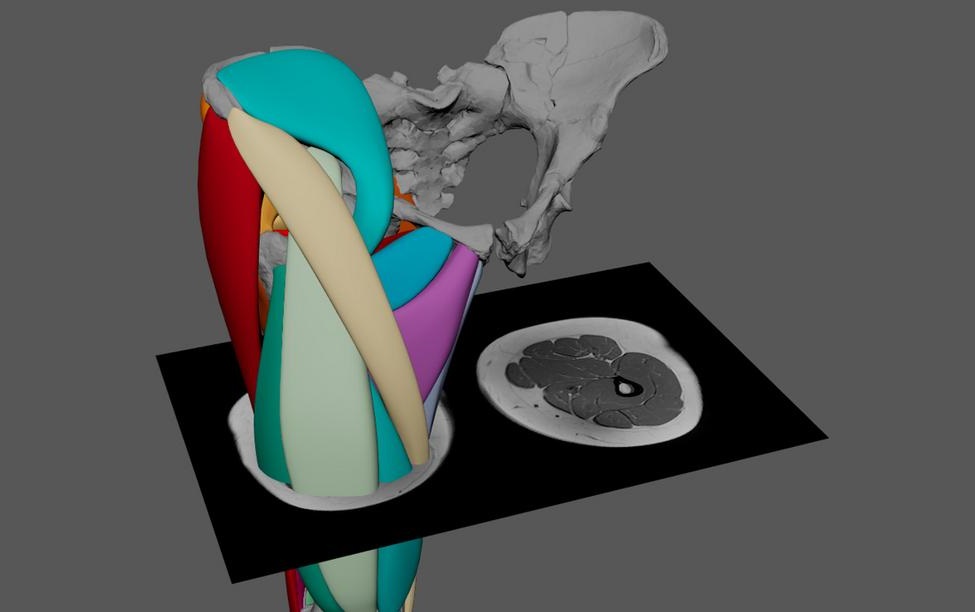The 3-Million-Year-Old Lucy Was Built Like a Powerlifter
Posted on Categories Discover Magazine

The real “Lucy” skeleton, the famous 3.2-million-year-old specimen of Australopithecus afarensis, resides within a specially constructed safe at the National Museum of Ethiopia in Addis Ababa.
Sophisticated molds of the bones, however, can be found all over the world, in such places as Arizona State University’s Institute of Human Origins, where they are used for scientific study. Or you can buy your own from Bone Clones, Inc., for $7,495, assuming you want the articulated version that fills in the incomplete skeleton.
Open source 3D scans are also available and formed the basis of a new study that seeks to settle the decades-old debate over whether Lucy walked upright, like a modern-day human, or in “a crouching waddle” like a chimpanzee, according to a press release. The paper throws its lot in with a consensus that has emerged over the past 20 years favoring the upright hypothesis.
Read More: The Australopiths: Our Ancient, Ape-like Forefathers
Lucy in the Sky With Diamonds
Donald Johanson and Tom Gray discovered Lucy in Ethiopia on Nov. 24, 1974, and while drinking and celebrating later that night, they reveled in the Beatles song “Lucy In the Sky With Diamonds,” playing it over and over. Someone proposed naming the anonymous skeleton Lucy after the song (the meaning of which is debated), and Lucy became Lucy.
She died as a young adult, judging by her teeth and other evidence, while roaming the grasslands of Africa and climbing through the forest trees. Her bones show little to no evidence of predator bite marks or those of scavengers, and the cause of death remains unknown. Scientists have concluded she was a female because of her small size – female A. afarensis were smaller than their male counterparts.
An artist’s depiction of Lucy, the world’s most famous Australopithecus africanus. (Credit: Greg Grabowski/Shutterstock)
Virtual Muscles for an Early Human
The 3D scans reconstructed an early human’s skeleton and soft tissue for the first time, modeling both the muscle and bone of Lucy’s lower half.
“Muscle reconstructions have already been used to gauge running speeds of a T. Rex,” says Ashleigh Wiseman, a researcher at the University of Cambridge, in a press release. “By applying similar techniques to ancestral humans, we want to reveal the spectrum of physical movement that propelled our evolution, including those capabilities we have lost.”
Lucy wasn’t very tall, only about 3 feet in height, but Wiseman concluded that her calf and thigh muscles were over twice the size of those of modern humans. Most of the 36 leg muscles recreated by the researcher turned out to be larger and bulkier than our contemporary equivalents.
How a Scientist Conjured Muscles From the Dead
To reconstruct her, Wiseman relied in part on MRI and CT scans of a modern-day woman and man, taking from them “muscle paths” that showed where muscles connected on the body. These informed how she reconstructed Lucy’s joints, and once that was complete, she layered on virtual muscles, following the “muscle scarring” marks left on the original bones.
Key evidence lay in the knee extensor muscles, which seemed to have the leverage required to straighten the knee.
“Lucy’s ability to walk upright can only be known by reconstructing the path and space that a muscle occupies within the body,” Wiseman says. “Lucy’s muscles suggest that she was as proficient at bipedalism as we are, while possibly also being at home in the trees. Lucy likely walked and moved in a way that we do not see in any living species today.”
Lucy roamed through grasslands and trees with well-adapted muscles. (Credit: Ashleigh Wiseman)
Read More: Mysterious Hominin Left its Mark With 3.66-Million-Year-Old Footprint